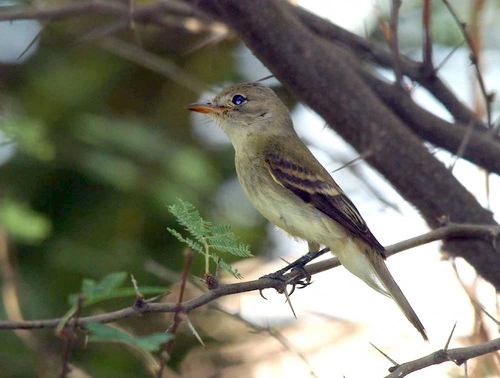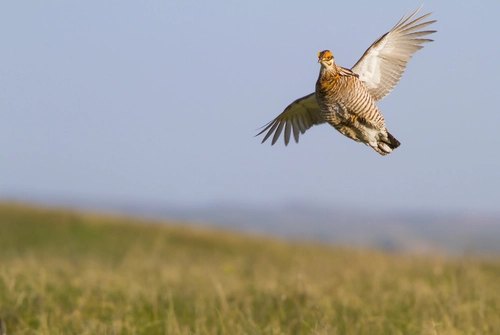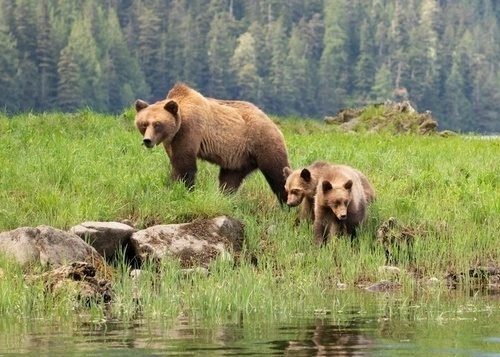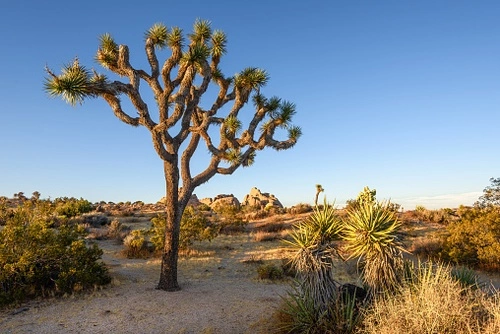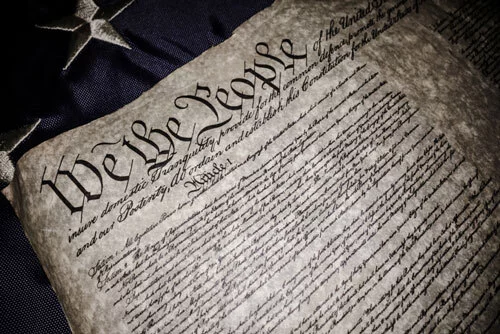Per Governor Newsom’s latest legislative update, he has signed AB 1319. The law will become effective on January 1, 2026. For our discussion of this bill and its potential implications, please see the following post.
“California Legislature Sends Endangered Species Bill to Governor” ...
On September 10, 2025, the California Senate passed Assembly Bill 1319 (AB 1319) with amendments, and the following day the California Assembly concurred in the amendments sending the bill to Governor Newsom for his consideration. AB 1319 is a direct response to concerns that the federal government may reduce existing protections for species listed as threatened or endangered under the federal Endangered Species Act (ESA). To do so, it proposes to establish a new category of species under the California Endangered Species Act (CESA), “provisional candidate species.”
What ...
On August 22, 2025, the United States Court of Appeals for the D.C. Circuit upheld the decision of the U.S. Fish & Wildlife Service (Service) to deny a petition to remove the southwestern willow flycatcher (Empidonax traillii extimus) from the list of species protected by the Endangered Species Act (ESA). The Service listed the southwestern willow flycatcher as an endangered species in 1995. The southwestern willow flycatcher is a small migratory bird that winters in Central and South America with a range in the United States that includes southern California, southern Nevada ...
On August 12, 2025, the U.S. District Court for the Western District of Texas (Midland Odessa Division) granted the U.S. Fish and Wildlife Service’s (Service) request to vacate and remand the agency’s final rule (Final Rule) listing the lesser prairie-chicken (Tympanuchus pallidicinctus) (LEPC) under the Endangered Species Act (ESA). The effect of the court’s order is to set aside the Final Rule, meaning the LEPC will no longer be listed under the ESA. According to the Service, it had identified a “serious, foundational defect” in the Final Rule. The defect identified by ...
On August 5, the United States District Court for the District of Montana issued an order overturning a determination made by the U.S. Fish & Wildlife Service (Service) during the Biden administration that listing the gray wolf (Canis lupus) in the western United States is not warranted and remanded the issue back to the Service for further consideration. The Service made the determination in response to two petitions to list separate wolf populations: one covering the Northern Rocky Mountains (the Northern Rocky Mountain population) and one covering the western United States (the ...
On August 1, 2025, the Senate approved Brian Nesvik, President Trump’s nominee for Director of the U.S. Fish & Wildlife Service (Service). The Service shares responsibility for administering the Endangered Species Act of 1973 with the National Marine Fisheries Service within the National Oceanic and Atmospheric Administration (NOAA).
Mr. Nesvik has decades of experience working for the Wyoming Game and Fish Department and rose to the position of Director of the Department in 2019. He served in that position until 2024. Mr. Nesvik also served in the Wyoming Army National Guard ...
The Committee on Natural Resources (Committee) in the U.S. House of Representatives is considering a number of bills regarding wildlife, including bills to reauthorize the Endangered Species Act (ESA) and Marine Mammal Protection Act (MMPA). While it is unclear whether any of these will gain traction, collectively they represent a significant effort to reform federal wildlife law. Below is a summary of the Committee’s efforts:
ESA Reauthorization: Committee Chair Westerman (R-Arkansas) is the lead sponsor of H.R. 1897. The Committee held a hearing on this bill on March 25 ...
On May 12, 2025, the U.S. District Court for the Central District of California ordered the U.S. Fish & Wildlife Service (Service) to reevaluate its decision not to list two species of Joshua tree—Yucca brevifolia (western Joshua tree) and Yucca jaegeriana (eastern Joshua tree)—as “threatened” under the federal Endangered Species Act (ESA). The district court issued a judgment in the case on July 7, 2025. The federal government has 60 days from the date of judgment to decide whether to appeal the district court’s decision.
The case stems from WildEarth Guardian’s ...
On April 17, 2025, the U.S. Fish & Wildlife Service (USFWS) and National Marine Fisheries Service (NMFS) (collectively, Services) published a notice in the Federal Register proposing to rescind the Services’ respective definitions of “harm” under the Endangered Species Act (ESA) (Proposed Rule). The notice indicates the Services will accept comments on the Proposed Rule until May 18.
Section 9 of the ESA prohibits “take” of endangered species and the Services have extended the “take” prohibition, by regulation, to many species listed as threatened under the ...
The Fifth Amendment to the U.S. Constitution states, in part, “nor shall private property be taken for public use, without just compensation.” The federal Endangered Species Act deals with a different type of “taking.” Section 9 of the Endangered Species Act generally prohibits any person from “taking” any species of fish or wildlife listed as endangered. 16 U.S.C § 1538. This is a general prohibition, because if a project involves a federal permit or approval, a federal resource agency can prepare a biological opinion under Section 7 of the Endangered Species Act and ...
Nossaman’s Endangered Species Law & Policy blog focuses on news, events, and policies affecting endangered species issues in California and throughout the United States. Topics include listing and critical habitat decisions, conservation and recovery planning, inter-agency consultation, and related developments in law, policy, and science. We also inform readers about regulatory and legislative developments, as well as key court decisions.
Stay Connected
 RSS Feed
RSS Feed
Categories
- Alternative Energy
- Bald and Golden Eagle Protection Act
- Budget
- CEQA
- CESA
- Climate Change
- Congress
- Conservation
- Construction Projects
- Consultation
- Continuing Education
- Court Decisions
- Critical Habitat
- Delisting
- Endangered Species Act
- Event
- Fish & Wildlife Service
- Freedom of Information Act
- Government Administration
- Legal
- Legislation
- Listing
- Litigation
- Migratory Bird
- National Marine Fisheries Service
- NEPA
- Off Shore Wind
- Pacific Northwest
- project
- Publications
- Regulatory Reform
- Sacramento-San Joaquin Delta
- SEPA
- Speaking Engagements
- Supreme Court
- Texas
- Timberland
- Water Issues


